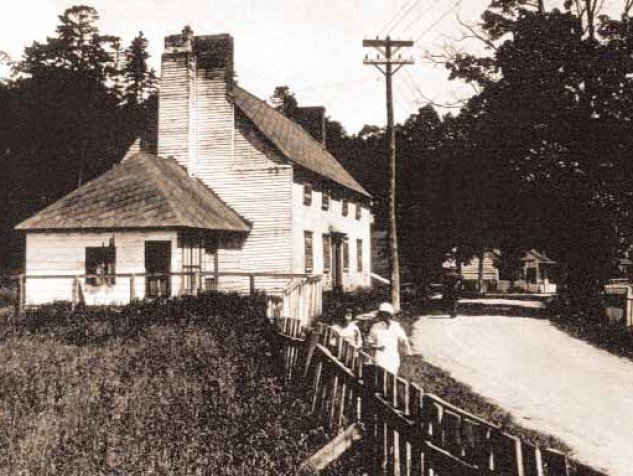Back to September 2016 Newsletter
The Mysterious Garlic of the Jesuit House

Lyne Bellemare
That was until I noticed a spiky bulb perched on a stalk of garlic growing in my garden earlier this summer. I had planted the precious bulbils from that paper envelope in a pot in the spring, then transplanted them into the garden and forgotten about them, since bulbils usually take 2 years – and sometimes up to 5 years – to produce harvestable garlic. I was surprised to see a flower stalk growing from the plant in its first year, and even more surprised to see what it looked like. Instead of the usual roundish bulbils that mature in early July, these were small and hairy! Each bulbil was in a soft green cylindrical covering, and the whole thing together looked like a fluffy ball.
I remembered that during his visit to the booth, Bouchard had mentioned that according to his research, this garlic may be a kind of Allium vineale or wild garlic, but he could not confirm that.
A unique story
The garden where the garlic grew is on the grounds of the Jesuit House of Sillery in Quebec. The original gardens have disappeared over the years, but some traces remain, including the perennial garlic and a largely forgotten variety of mint.
The occupation of the area began long before the arrival of missionaries; nomadic aboriginal groups stayed seasonally on the banks of the St. Lawrence to fish and to trade. In the 1720s, the Jesuits built a house in Sillery, which is now a historical monument, as a base for both subsistence agriculture and evangelization. It is possible that the garlic was introduced at that time.
After the Seven Years' War, the house was rented to the British for the summer. An English writer, Frances Brooke, left her native country in 1763 to join her husband in Quebec. She stayed at the home in Sillery for four years, during which time she wrote a novel that drew some of its most beautiful scenes from her immediate environment. From the 19th century onwards, the house was inhabited by Richard Dobell, a prosperous timber merchant. Over time, the traces of the Jesuits and the other inhabitants of the home have disappeared. Only the house bears witness to their passage.
In 1929, the Historic Monuments Commission of Quebec turned the house into a museum. Despite this new designation, the building was at various times threatened with demolition or neglected because of a lack of resources, and had an uncertain future. In 1986, when it became the property of the City of Sillery, the house was finally restored and made into an interpretation and exhibition center. The garden is almost gone now, and the only remainder of its original state is a clump of unusal garlic growing under an old apple tree.
Wild garlic (Allium vineale)
Wild garlic flowers from June to September, much later than the garlic usually grown in our gardens. Cattle that graze on wild garlic are said to produce garlic-flavoured milk and meat. It is considered a noxious weed, since grain harvested from its vicinity can carry the odour of garlic, and because it is resistant to herbicides. Wild garlic is widespread in France and England.
Despite the fact that its bulbs are smaller than regular garlic, this garlic, with its wild hairstyle, will always have a place in my gardens. I appreciate it for its taste but also for its history, because it is our duty to preserve such precious inheritance – not just in stone, but also the living heritage in our gardens.
**
Find out more about the Jesuit House of Sillery, Richard Dorbell and the history of Sillery.
Lyne Bellemare is Seeds of Diverity's french program coordinator.
Photo: The Jesuit House of Sillery. Maisons du patrimoine
Not yet a member?
An annual membership to Seeds of Diversity gives you access to our seed exchange, seed grow-out programs, and our online news.

We depend on donations to do our work.

Thank you for your support!
